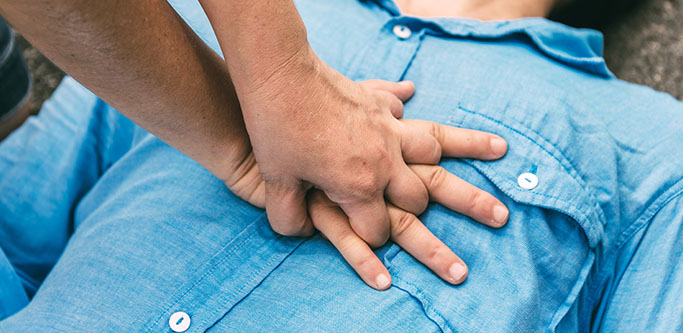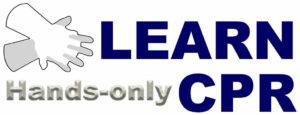
Sudden Cardiac Arrest

EMERGENCY
– ACT FAST –
What is Sudden Cardiac Arrest (SCA)?
Cardiac arrest happens when the heart malfunctions and suddenly stops beating. The heart is basically a pump controlled by an electrical system; the electrical system regulates the rate and rhythm of the heartbeat. Sometimes problems in the electrical system, often caused by heart disease, produce irregular rhythms called arrhythmias. Some arrhythmias can cause sudden cardiac arrest — and when the heart stops pumping, blood no longer travels to the brain and lungs, and death can occur within minutes.
How is SCA different from a Heart Attack?
A heart attack happens when blood flow to part of the heart is restricted or blocked. The victim is conscious and does NOT need CPR, but must get to the hospital as soon as possible: Call 911. Heart attacks increase the risk for sudden cardiac arrest.
How do I recognize SCA?
You may see the person collapse suddenly. They may be gasping for air or not breathing at all. They’re unresponsive to a hard tap or a shouted “Are you OK?” Pulse may be irregular, faint, or absent.
How does CPR help?
CPR chest compressions mimic the heart pumping and keep blood flowing throughout the body. CPR buys time for emergency medical services (EMS) to arrive after 911 is called.
What should I do if I’m first on the scene?
#1
SHOUT FOR HELP
and
CALL 911 IMMEDIATELY
Send someone to get an AED (automated external defibrillator) if one is close by. Tell them to hurry. Minutes matter. An AED is a special defibrillator bystanders can use. In Lyme, AEDs are located at the town hall, the school, the library, and the Hamburg and Hadlyme fire stations.
If you are alone, call 911, put the phone on speakerphone, and keep it nearby.
#2
CHECK BREATHING
If the person isn’t breathing or is only gasping for breath, start CPR.
#3
ADMINISTER CPR
– Place one hand on top of the other on the center of the chest
– Push to a depth of 2 inches, then allow the chest to return to normal position
– Continue compressions at a rate of 100-120 pushes a minute
– Use the tempo of the song, ‘Stayin’ Alive’ as a guide (Listen to Stayin’ Alive on YouTube)
– Keep going until EMS arrives
Watch this instructional video:
#4
USE THE AED
If available, use the AED as soon as possible: turn it on and follow the prompts. Watch the video below to familiarize yourself with how to use an AED. The device itself will provide spoken step-by-step guidance:
Be aware: Reading about sudden cardiac arrest and watching videos won’t build confidence the way formal instruction with hands-on practice will — like the training you’ll get by attending one of our FREE classes in person. Dates for upcoming classes are posted at the top of our homepage.
Or call (860) 434-7225 or email deputychief@lymeambulance.org to inquire about the next class.
Sources: Action First Aid, American Heart Association, American Red Cross, FEMA, National Heart, Lung, and Blood Institute
 Lyme Ambulance Association, Inc.
Lyme Ambulance Association, Inc.